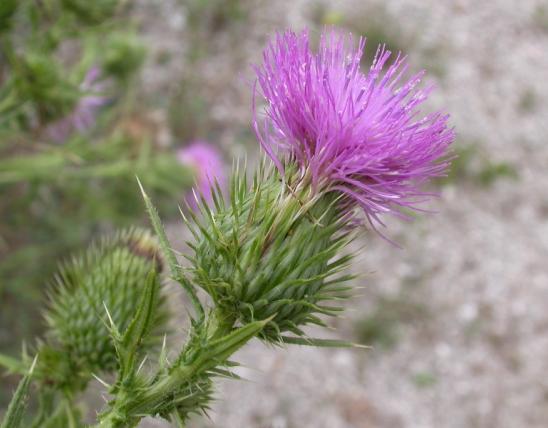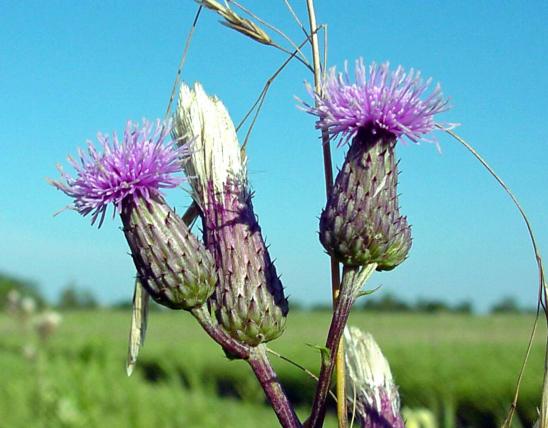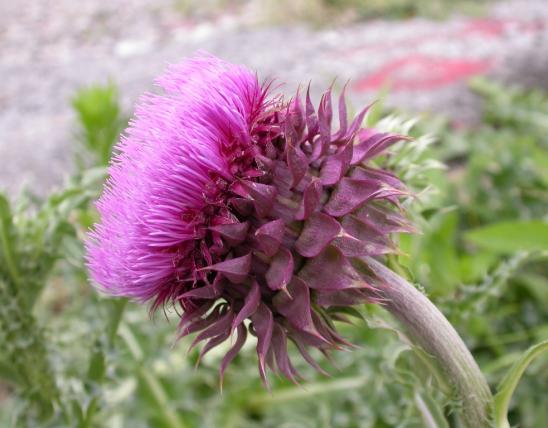
Tall, branching biennial or short-lived perennial. Stems hairless or sparsely hairy, sometimes with patches of white felty hairs; lacking spiny-edged wings. Flowerheads many, solitary at the branch tips, pink-purple or reddish purple, rarely white. Outer involucre bracts with a dark spot; all bracts end in a weak prickle. Blooms July–October. Leaves unlobed, toothed or wavy, with marginal prickles only (none on the leaf surface), woolly-hairy beneath. Upper stem leaves narrowly lance-shaped with longer spines.
Similar species: Missouri has nine species of Cirsium. Some are invasive exotics. Others, like tall thistle, are native. Tall thistle is closely related to field thistle (C. discolor), and the two can hybridize where they grow near each other. Most or all of the leaves of field thistle are deeply lobed. Field thistle is uncommon in the Ozarks but scattered to common elsewhere in the state. It is more common in upland habitats and disturbed places.
Height: to 10 feet.

Scattered to common nearly statewide.
Habitat and Conservation
A native thistle occurring in bottomland forests, banks of streams and rivers, and bases of bluffs; less commonly on glades, upland prairies, and openings of upland forests; also old fields, railroads, and roadsides. This plant spends its first year growing as a basal rosette of leaves; the second year it sends up its tall flowering stalk.
Status
Tall thistle is one of several native thistles that are valuable components of our state's flora. Native thistles provide nectar for monarch butterflies and seed and nest material for goldfinches. Here are quick ways to tell our native thistles from exotic invasive thistles: Native thistle leaves usually have whitened, woolly undersides, contrasting with the green upper sides, while leaves of exotics are green on both sides. Exotic thistles also tend to have heavily branched stems and more numerous flowerheads per stem.
Human Connections
The young shoots and leaves have been cooked and eaten. Tall thistle is native to the eastern US west to North Dakota and Texas, so this particular species of thistle is not a symbol of Scotland. There are 200-350 species of Cirsium thistles in the world, widespread in the Northern Hemisphere.
Ecosystem Connections
Bees, butterflies, skippers, and moths visit the flowers for nectar and pollen. In late summer and fall, goldfinches feast on the seeds. Goldfinches' late-season nesting time coincides with the peak abundance of aster-family seeds, and they line their nests with the seeds' silky "parachutes."


























